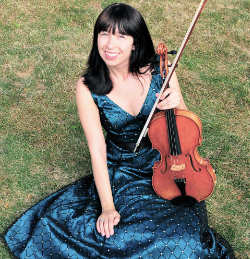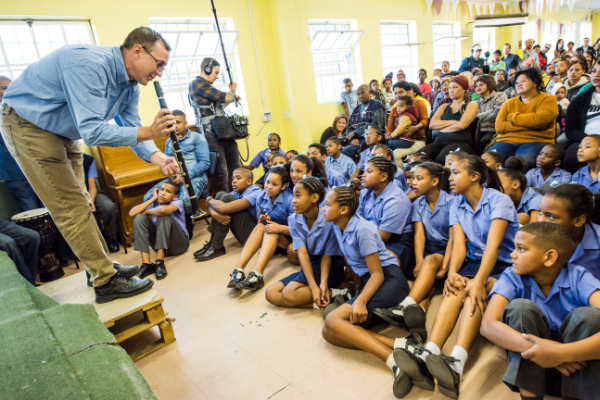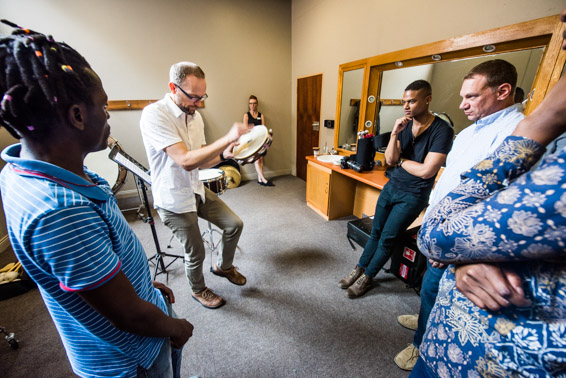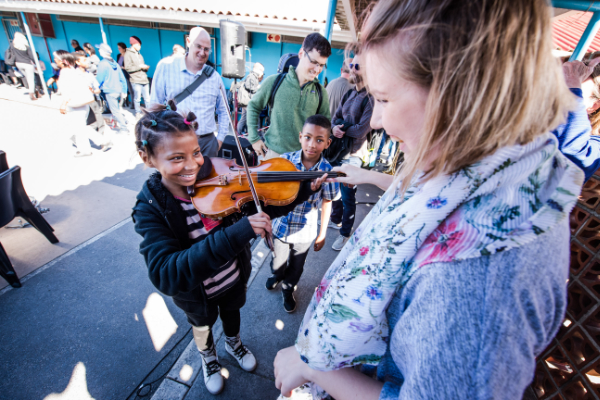
Photo credit: John Clapham
In celebration of the centenary of Nelson Mandela’s birth, the Minnesota Orchestra recently performed in five cities throughout South Africa following a return performance at the BBC Proms in London. The orchestra had the distinct honor of being the first professional orchestra from the United States to visit South Africa. Following our historic—and for the orchestra, transformational—tour to Cuba in 2015, and Maestro Osmo Vänskä’s previous experience as a guest conductor for the South African National Youth Orchestra (SANYO), our orchestra, the Board of Directors, and the Nelson Mandela Foundation were all inspired to make a tour to South Africa a reality. Led by the stellar staff of Classical Movements, the tour included more than 300 Minnesotans, including the orchestra members and their family members of all ages, staff, patrons, board members, members of the press, the Minnesota Chorale and their guests, Minnesota Public Radio, and members of the Minnesota business community. Over the course of the 12 days in South Africa, the orchestra traveled to Cape Town, Durban, Pretoria, Soweto, and Johannesburg.

Tim Zavadil speaks to students at Cape Town Elementary School
Photo credit: Travis Anderson
We first prepared for this tour, aptly named Music for Mandela, during our summer season, by presenting two weeks of programming for our community at home. This included not only performances of the music that would be featured on tour, but also an African market in the lobby of Orchestra Hall, a partnership with Books for Africa to collect donations of books for children, and a free International Day of Music, which featured local artists of all ages and genres. Second flutist Wendy Williams was particularly drawn to the four South African themes that emerged from Mandela’s leadership and the post-apartheid government—inclusivity, reconciliation, truth, and ubuntu, a concept of common humanity and oneness. “These are the same themes that helped our Minnesota Orchestra community heal and recover after our lockout ended in February, 2014,” said Ms. Williams.

Percussionists Brian Mount and Steve Kimball give a masterclass at the University of Pretoria
Photo credit: Travis Anderson
This tour model differed from past tours because we were out in the community as much as we were in the concert hall. In each city, there were cultural exchange activities and opportunities for our musicians to work directly with the young musicians of South Africa. These included sectionals and master classes, as well as small ensemble performances at the Cape Music Institute, the University of Pretoria, Elsie’s River Primary School, and for the students who comprise the Kwazulu Natal Wind Ensemble. The orchestra also participated in interactive rehearsal coaching and side-by-side performances with the Cape Town Philharmonic Youth Orchestra and the SANYO. Maestro Vänskä had the opportunity to work with both orchestras in rehearsal, and our Associate Conductor, Roderick Cox, led the SANYO in concert with a performance of Sibelius Symphony No. 2.
Each concert setting was uniquely vibrant. For example, one musician recalled how pigeons somehow happily made their way into City Hall in Johannesburg to catch some Beethoven, while other locations held a deeper, historically rooted meaning. The concert in Soweto, broadcast on Minnesota Public Radio, was held at Regina Mundi Catholic Church. During apartheid, the church was known locally as a gathering place, as political meetings in public places had been banned. It later was a meeting site for the Truth and Reconciliation Commission in the mid-to-late 90s. The concert ended with playing and singing traditional African songs, including the much beloved Shosholoza, a working song for miners that now serves as an unofficial second national anthem. Many audience members sang and danced along to this music of celebration and resistance against apartheid.

Doug Carlsen (trumpet), Ben Odhner (violin), and Sarah Grimes (violin) work with students at Cape Town Elementary School
Photo credit: Travis Anderson
We wanted these concerts to be as accessible to the community as possible, so we were grateful to collaborate with the U.S. Embassy and Medtronic, a Minnesota-based medical technology company. In an effort to bring in as diverse an audience as possible, they helped to provide tickets and transportation to and from the concerts.
Following each concert, the musicians passed through the audience to get to their cases and storage trunks, making for easy conversation with concertgoers. For Acting Associate Principal Bass player, Kate Nettleman, it was the way that the music inspired meaningful personal interactions with people that made this tour special. In her own words, “I think what will stay closest to me are impressions I carried away from conversations I had with audience members before and after several of the concerts and the inspiring introductory remarks made at each concert by US diplomats, regarding the joyous power of diplomacy via the arts in today’s world. All in all, I felt centered and purposeful sharing music we all know well and love so much, and learning new South African music, too.”
Another musical highlight of the tour was performing Beethoven Symphony No. 9 with four South African soloists, our Minnesota Chorale, and the Johannesburg-based Gauteng Choristers. Classical Movements also commissioned a new piece, Harmonia Ubuntu, from South African composer, Bongani Ndodana-Breen. This work for soprano and orchestra, which featured young South African soprano Goitsemang Lehobye, is a blend of traditional classical music idioms with African rhythms. The text comes from various speeches of Nelson Mandela, opening and closing with the powerful words, “I learned that courage was not the absence of fear, but the triumph over it.” Fortunately, Mr. Ndodana-Breen and the four soloists for the Beethoven were able to join us here in Minneapolis in July for one of our summer concerts celebrating the tour.
Outside of the varied musical settings, orchestra members also saw wild animals on an overnight safari, enjoyed the natural beauty of the coast outside of Cape Town, and set foot into the Indian Ocean—many for the first time. Ms. Williams recalled how the musicians, staff, and patrons deepened connections and enjoyed wonderful group dinners together, including a torch-lit buffet following an evening safari drive under spectacular stars. This was the farewell tour for outgoing CEO and President Kevin Smith, who has been a truly dedicated leader of our orchestra since the lockout; we will always be grateful for his commitment to the orchestra through these years of substantial healing and growth. His ideas, along with Maestro Vänskä’s, drove the development of our new model for touring. Michelle Miller Burns, our new CEO and President, and her husband also joined us for the tour and were welcomed into the orchestra family. Some orchestra musicians also took the opportunity to tour several notable historical sites, such as Nelson Mandela’s Soweto residence, the Apartheid Museum in Johannesburg, and Robben Island, where Mandela was imprisoned for 18 of his total of 27 years of incarceration.
Though there were instances of illness and fatigue throughout the tour, the musicians were unwavering in their commitment to serving the communities with enthusiasm and open hearts. When I asked some of my colleagues to speak about some of the most important messages that they will take away from this historic tour, Ms. Nettleman said, “I came away from the trip with a greater understanding of Nelson Mandela’s impact and a real gratitude for the lessons of his legacy.”
Note: Wendy Williams, Maureen Conroy, Marcia Peck, and Kate Nettleman contributed to this article.





